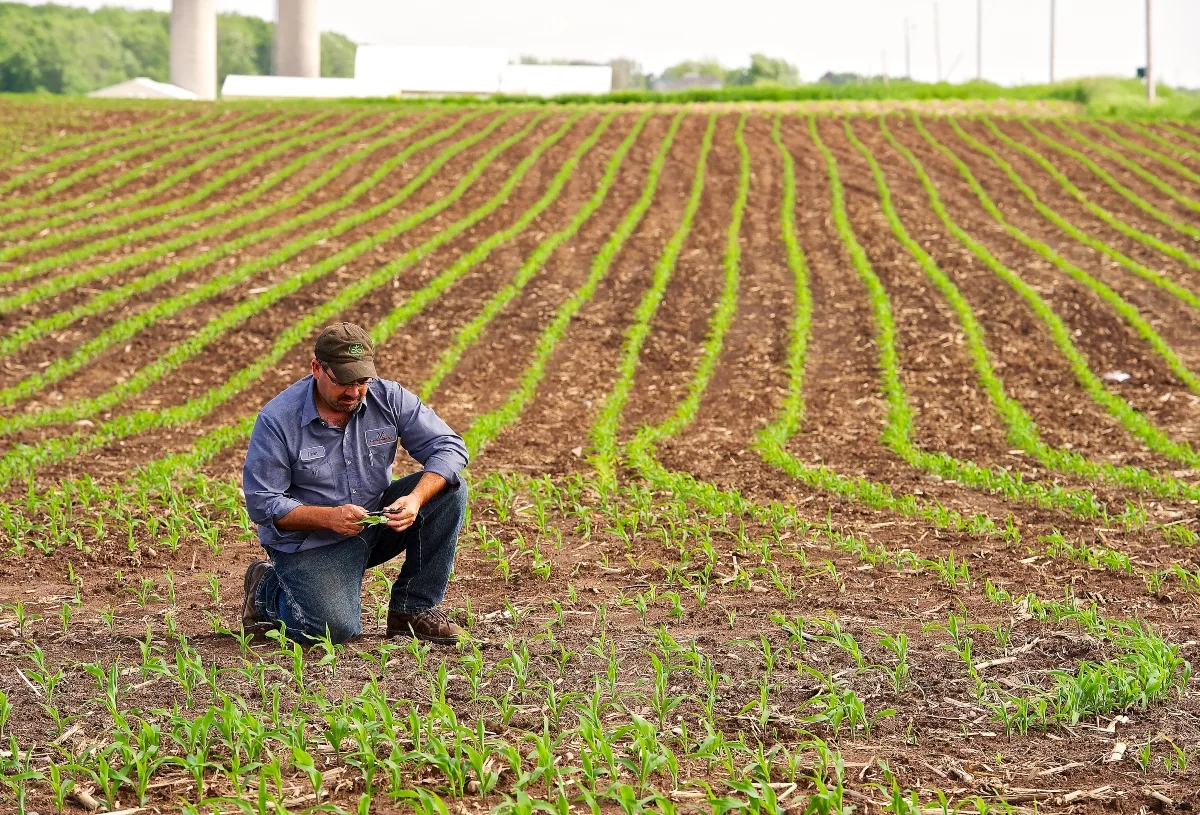Photo by Len Villano
The public has a right to ask questions about how well farmers are taking care of the environment – we all rely upon shared natural resources.
Fellow farmers sometimes raise an eyebrow when I say such things. Why is that? Perhaps because they think it’s obvious they are motivated to be good environmental stewards because their very livelihoods depend on it. That’s true, but that alone doesn’t make farmers the very best stewards they can be. Passion, commitment and innovation are all needed. And thankfully, they are vividly on display as part of agriculture’s drive toward continuous improvement.
Don’t take my word for it. I am delighted to introduce you to three farm families recognized with 2019 U.S. Dairy Sustainability Awards for their work and ingenuity.
John Maxwell, owner of Cinnamon Ridge Farms in Iowa, joined a growing movement to plant cover crops (no pun intended). Cover crops help protect soil health by adding organic matter and when farmers go to a no-till approach, there is less disruption of the soil and less nutrient runoff and erosion.
Cover crops at Cinnamon Ridge Farms serve another important purpose: feeding a hungry dairy herd. Maxwell discovered that ryegrass survived the winter and is a great feed option for his herd of Jersey cows. In turn, the cows produce a natural fertilizer for the crops. And as a bonus, the cover crops help to ensure the ground is fertile for the regular growing season when he plants corn or soybeans.
It’s a win-win-win because the crop variety means a better-balanced diet for the cows. If that’s not enough, Cinnamon Ridge Farms also repurposes other food for its cows – food that can’t be sold at retail. For example, mislabeled coffee creamer has become part of their feed. The Maxwells’ nutritionist determined the creamer provided a good source of carbohydrates. Charge on! Of course, the cows loved it, adding great flavor to their feed. Here’s the ah-ha: 2,000 pounds of creamer per week destined for the landfill was instead diverted to fortify cow diets. Pretty cool.
A few hundred miles northeast, near the shores of Lake Michigan, you’ll find Majestic Crossing Dairy. Wisconsin farmer Dean Strauss is a big believer in doing more with less, including by adopting a GPS guidance system on his tractors and other machinery. The farm grows 3,600 acres of corn, alfalfa, wheat and soybeans for cow feed, and the technology ensures precise seed distribution while reducing fuel, pesticide and fertilizer use.
The cows at Majestic Crossing are themselves a sustainability story. They are a genetic mix of Holsteins, Viking Red and French Montbéliarde (for non-aggies, these are three different breeds of dairy cattle). They are moderate in size, so they eat less food and produce less manure while providing milk that is higher in milk fat and protein, ideal for cheese production. Perfect for the milk’s destination, the Sartori cheese company, which is just seven miles down the road from the farm – yet another sustainability achievement, recognizing that transportation has its own carbon footprint.
Majestic Crossing Dairy also now uses robotic milking machines, which reduced the farm’s water use by 30 percent (about 20 gallons per cow per day). How? The machines require less frequent rinsing of the cows’ udders and washing of the milking area. Udderly impressive! (Okay, you knew I wouldn’t pass that up).
The third honoree is much farther west in sunny California. Philip Verwey Farms, named after the owner, has reduced oxides of nitrogen emissions by 90 percent – all because Mr. Verwey set his sights on improving air quality.
He had been blending the feed ingredients for his cows in a mixing wagon powered by a diesel tractor. With funding help from the San Joaquin Valley Air Pollution Control District’s Technology Advancement Program, he converted his diesel-powered feed-mixing operation to electric. Sound small? This change significantly reduced the amount of run time by his diesel engines, lowering diesel consumption by 71 percent per month. That’s the equivalent of taking 7,800 passenger cars off the road.
The great news: not only was it an air quality win, but it was also a win for his cows because the texture and composition of the feed improved. The project was so successful that the San Joaquin Valley air district expanded the program to help other dairies make a similar conversion. The story doesn’t end there. The electricity that powers Verwey’s feed mixer is generated on the dairy from a manure digester, which can also generate enough energy to power 3,000 additional homes. Talk about going green.
These are just a few examples of the innovative and exciting actions being taken as part of agriculture’s commitment to continuous improvement. The efforts highlighted here are worthy of recognition but make no mistake, they are not isolated. All across the country farmers are finding new ways to take care of our soil, air and water, using less energy, while producing the healthy, affordable food we’ve all come to expect.
As always, I welcome your feedback, questions and topic suggestions at AskDrDorman@pahc.com or call me at 844-288-3623. You can also browse our Resource Library to learn more.
